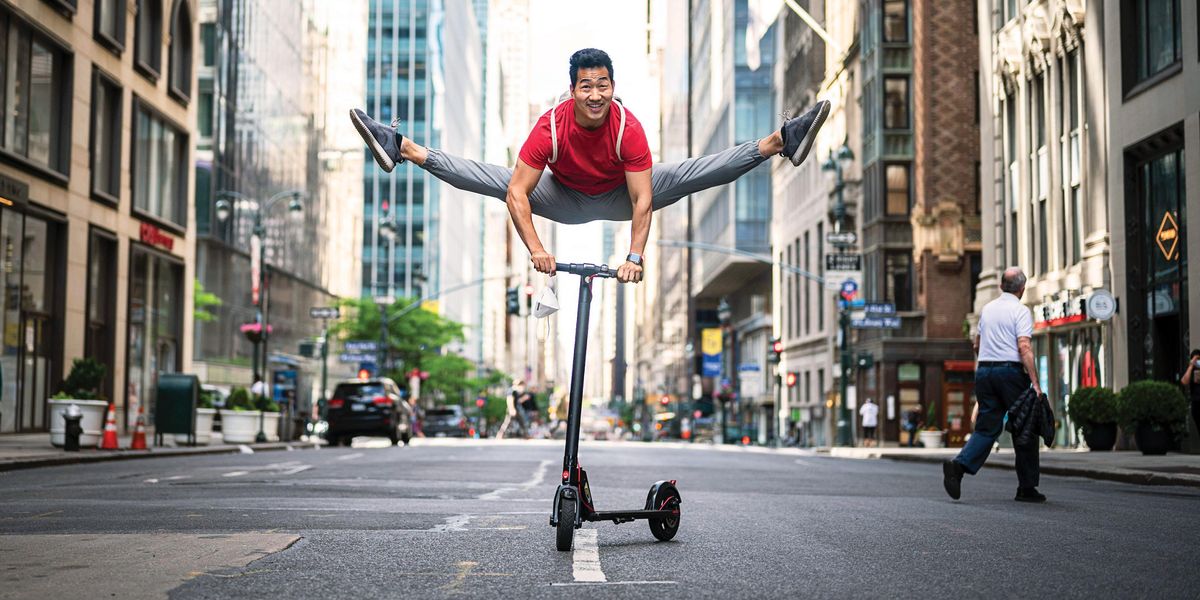What It Takes to Launch a Successful Influencer Business
Pandemic or not, Alison Stroming has been booking job after job—and she has her social media to thank. “Every job I’ve booked in quarantine has happened because someone DMed me or sent me an email saying, ‘We found you on Insta or TikTok,’ ” she says. Stroming, who started amassing her social media following while still a dancer with Dance Theatre of Harlem, has partnered with brands like Netflix, Sorel, Laura Mercier, Canon and Adobe over the last year to create sponsored content.
As more dancers join the ranks of paid influencers, you might be looking to get a piece of the sponsored-content pie. But launching a successful influencer business takes more concerted strategy than simply posting great content—it’s about developing and diversifying your personal brand, pitching yourself confidently, and learning how to successfully collaborate with companies.
Consider Your Brand
Commercial dancer Alex Wong says social media has taken over as his number-one source of income, thanks to brand partnerships. He compares crafting a successful social media account to producing your own television show—have an idea of what you bring to Instagram or TikTok before plunging in. “I hear people say, ‘I want more followers,’ but that’s like saying, ‘I want more people to watch my TV show’ without having a clear idea of what you want to produce,” he says. Think about what would make someone you don’t know want to follow you. “What do you have to offer?” Wong says. “For example, I do light humor with dance and fitness.”
Shaping your brand will set you up for more authentic partnerships—and diversify your sponsored-content options, says Lissette Calveiro, social media coach and influencer marketing consultant. “If you develop who you are beyond just a dancer, then you’re more open to working with different lifestyle companies,” she says. “You’re not pigeonholed to only working with dance-related stuff.”

Franz Steiner, Courtesy Stroming
Nabbing Partnerships
According to Calveiro, there are three ways to secure a brand partnership, where you promote a product via a post or story in exchange for a fee or portion of sales profits.
Get discovered:
It’s possible that your profile and following may be exactly what brands are looking for—and they’ll reach out to you. “If you’re super-clear about what you do, the right brand will be able to tell that you’ll reach the people they want,” she says. Stroming says you should treat your Instagram like a resumé: “Make sure that it looks professional. I have an email listed, I have my website listed—make it clear: When people open your page, they know you’re a dancer.”
Pitch yourself:
Don’t limit yourself by pitching a specific opportunity, says Calveiro. Instead, focus on establishing a relationship. “That brand might say, ‘We’re not working on anything right now, but let’s send you a PR package,’ ” she says. “You can email back later if you love the product, and then, when there is a budget, they’ll think of you.”
Speed-date:
On influencer marketplaces, like Fohr, Collectively, Obviously and InfluenceHer, you can connect with brands looking for partners. “It’s almost like LinkedIn meets a dating app,” says Calveiro.
How to Nail Sponsored Content
Wong has been happy to have had brand partnerships that have allowed him to flex his creative muscles and keep the content authentic. Getting there successfully takes strategy.
1. Go in with a plan.
Brands often have specific frameworks in mind for sponsored content, but they also look to you for ideas. Calveiro notes that a brand will always give you a brief—a quick rundown of what you need to include—but it’s a good practice to discuss beforehand anything you have in mind. “That way, if what you’re thinking about isn’t really what the brand wants, you can take another pass,” she says. “It has to feel like a collaboration.”
2. Always have a written agreement.
“When I was brand-new to sponsored content, I didn’t sign anything for one partnership, and then the brand was using my photos on their page, and I wasn’t getting tagged or getting credit,” Stroming says.
3. Keep it balanced.
Calveiro’s recommended ratio is 80 percent non-sponsored posts to 20 percent sponsored. “You want to build a community,” she says.
4. Track your metrics.
First, find out what the campaign’s goals are: Engagement? Driving traffic to a website? A high conversion rate? Calveiro likens audience testimonials to gold and encourages influencers to screenshot them to send to brands at a campaign’s end. “A valuable comment might say, ‘I love this brand, I’m so happy you’re working with them, and because of you I bought this’—that shows you’re more than just a number,” she says.
Leverage Your TikTok Account
Are you an avid TikTokker? Calveiro thinks long-term partnerships and video are where the future of brand partnerships lie now that the platform is providing more access to royalty-free music. “2021 is going to be the TikTok gold rush,” she says. As with Instagram, she suggests building a personal brand that extends beyond dance. “If you’re a dancer, you’re probably getting a lot of visibility, but keep incorporating other stuff. Let your off-duty life open the door to opportunities.”




